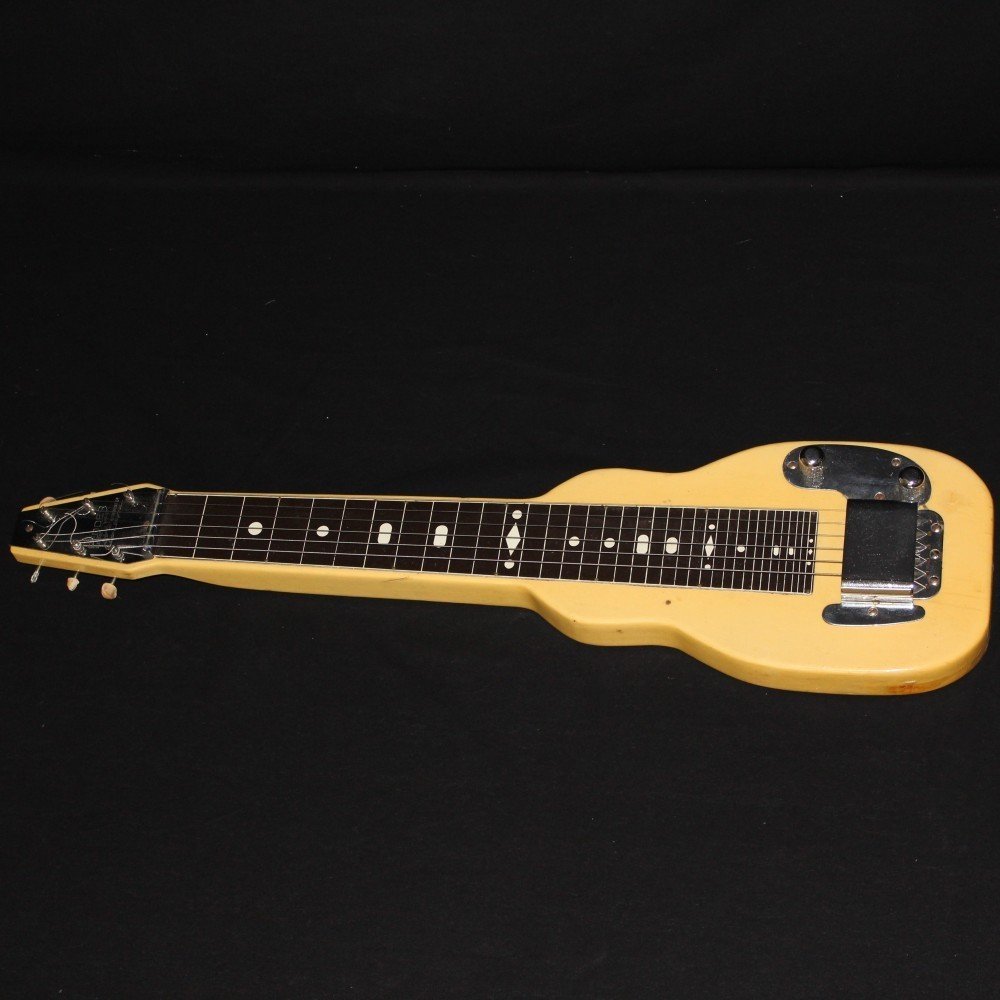
Having said this, there are a lot worse guitars out there, and as well as being historically important, the 1820 bass can certainly provide the goods when required. item 2 50's Fullerton Fender Deluxe 8 Lap Steel with Legs and Case. Comes with its original alligator brown case. It is all original and in very good condition for its age. Built with a lightly contoured Alder or Ash body, a single pickup mounted on a metal control / bridge plate and a fairly standard six-string tuning set at the head. Birmingham, AL, United States (122) Preferred Seller Quick Responder Quick Shipper. Fender began producing lap steels around 1948, and in 1955 their Champion entry level model was replaced by the simpler Fender Champ lap steel. This model was made between 19 in the pre-CBS period in the Fender Fullerton, CA factory. Early 1950s Fender Champion Champ Lap Steel with Tweed Case 100 Original. The 8.12k Ohm DCR is normal for the 52/53 year time frame. I learned quite a bit over the last couple of days, regarding these pickups. I got an appraisal today from a good local dealer and everything checks out. The capacitor is a new old stock oil and paper cap that works and sounds great. Selling my Fender 1950s Champion Lap Steel. Re: Original Early 50s Fender Champion Lap Steel Pickup - Identification Ok, so quick update.

The pickup is a Seymour Duncan Antiquity made specially for the Champion lap steel and the wiring harness, pots and knobs are new but have been 'Aged' with cloth wiring to resemble the original setup. Over the course of the 70s, the Japanese output improved dramatically, and in many ways these early 70s models are a low point for the brand. item 1 50's Fender Lap Steel LEG MOUNTS-Set-Champion Dual 6 8 Stringmaster-Genuine-Lk 1 -50's Fender Lap Steel LEG MOUNTS-Set-Champion Dual 6 8 Stringmaster-Genuine-Lk. I took this out of a 1953 Fender Champion lap steel.


These new Epiphones were based on existing Matsumoku guitars, sharing body shapes, and hardware, but the Epiphone line was somewhat upgraded, with inlaid logos and a 2x2 peghead configuration. The Matsumoku factory had been producing guitars for export for some time, but the 1820 bass (alongside a number of guitar models and the 5120 electric acoustic bass) were the first Epiphone models to be made there. By the end of the 1960s, a decision had been made to move Epiphone guitar production from the USA (at the Kalamazoo plant where Gibson guitars were made), to Matsumoto in Japan, creating a line of guitars and basses significantly less expensive than the USA-built models (actually less than half the price).


 0 kommentar(er)
0 kommentar(er)
